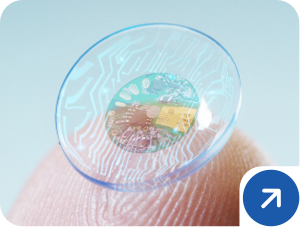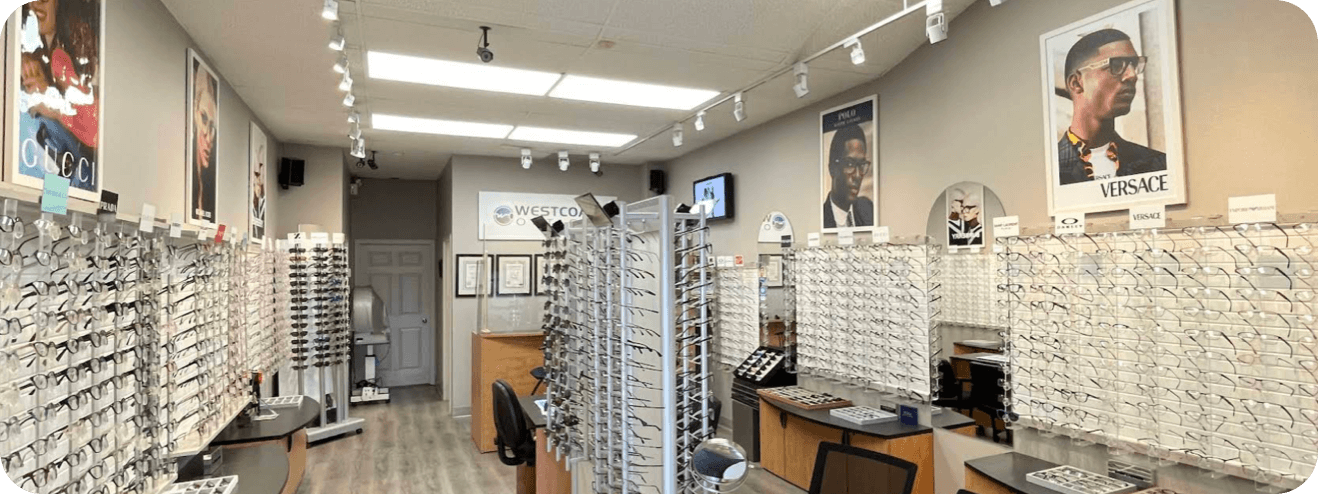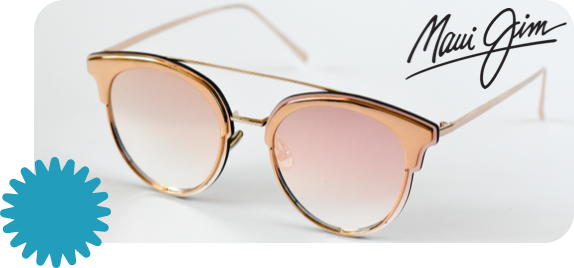Even though it’s small, the human eye is incredibly complex. It’s capable of capturing light and transforming it into images that our brains can interpret. But there’s a problem: it doesn’t always work properly. When the eye is shaped wrong, it can cause your eye to refract light wrong in a condition called a refractive error. Fortunately, this can be corrected with eyeglasses—but how do they work?
When you have a refractive error, light isn’t entering your eye properly. Glasses adjust light as it enters the eye so it can focus on the right point and give you clear vision. But every person’s eye is different, so you’ll need to visit an optometrist for a routine eye exam to get a proper prescription.
How Does the Eye Work?
Think of your eye like a camera. When light enters your eye, it first hits the cornea, the clear, dome-shaped surface at the front of your eye. The cornea then bends the light and sends it through the pupil, the dark spot in the center of your eye.
This light continues through the lens, which further focuses the light to a singular point on the retina at the back of your eye. The retina converts this light into signals that are sent to the brain through the optic nerve, allowing you to see.
But all of this relies on the eye being perfectly shaped. It has to refract to a singular point, so there’s very little room for error.
What Is a Refractive Error?
When there’s a problem with the shape of your eye, it can cause light to refract incorrectly. Instead of reaching the focal point on the retina, it converges somewhere else. When this happens, it’s called a refractive error.
There are several types of this, but the four most common are:
- Myopia, or nearsightedness, where nearby objects are clear but get blurrier the further away they get
- Hyperopia, or farsightedness, where nearby objects are fuzzy but distant objects are clear
- Astigmatism, where your vision becomes distorted due to an irregularly shaped cornea
- Presbyopia, the age-related loss of the ability to focus on nearby objects
All of these cause a problem with how your eye refracts light. Fortunately, they can be corrected with a pair of eyeglasses.

How Do Glasses Fix Vision Problems?
Remember: a refractive error is caused by a problem with how your eye refracts light.
Glasses correct refractive errors by changing how the eye refracts light. They do this by adding or subtracting focusing power to your eye’s natural lens, adjusting how it enters to compliment the natural shape of your eye. This allows light to hit the retina at just the right spot, making it significantly easier for your eye to build a proper image of the world around you.
There are even several types of specialty lenses, like bifocals, multifocals, and progressive lenses. These all have separate viewing zones and are typically used to correct presbyopia. Each of the zones is ideal for either nearby, intermediate, or distant vision.
Are All Glasses the Same?
However, that doesn’t mean you can just grab any pair and try them on! Every pair of eyeglasses is different. Some are thicker to focus light more strongly, while others are thinner for less serious refractive errors. The shapes, sizes, and thickness of the lens play a big role in how the glasses refract light. And over time, your eyesight is likely to change, so you’ll have to return for regular eye exams.
Every person’s eye is different, and refractive errors can vary wildly in how much they affect your eye. To correct your vision, you need a trained eye care professional to take a proper measurements of your eye.
During a routine eye exam, an optometrist will measure how severe your refractive error is. They’ll perform a series of tests aiming to test your visual acuity (how clearly you see) and measure the specific way your eye refracts light. Then, they’ll provide you with a prescription so you can get a proper pair of glasses.
How to Tell if You Need Glasses
But there’s one question that remains: how can you tell if you need glasses? This can be especially difficult to answer if you’ve never had an eye exam. Fortunately, there are some signs to watch out for that indicate you might be having vision troubles:
- Blurry vision
- Constant headaches
- Eye strain, like your eyes are heavy or tired
- Difficulty seeing at night
- Halos around light sources
- Light sensitivity
- You can’t read small print, digital or printed
If you notice any of these signs, it’s likely that you need glasses. So it’s time to come visit our team at West Coast Optical!
Where to Get Glasses
When it comes to finding the right pair of glasses, our team at West Coast Optical is here to help. Our experienced team can find the right frames for your shape, and during an eye exam with one of our team, we can find your proper prescription. Don’t let vision problems hold you back from seeing the world clearly—book an appointment with us today!















